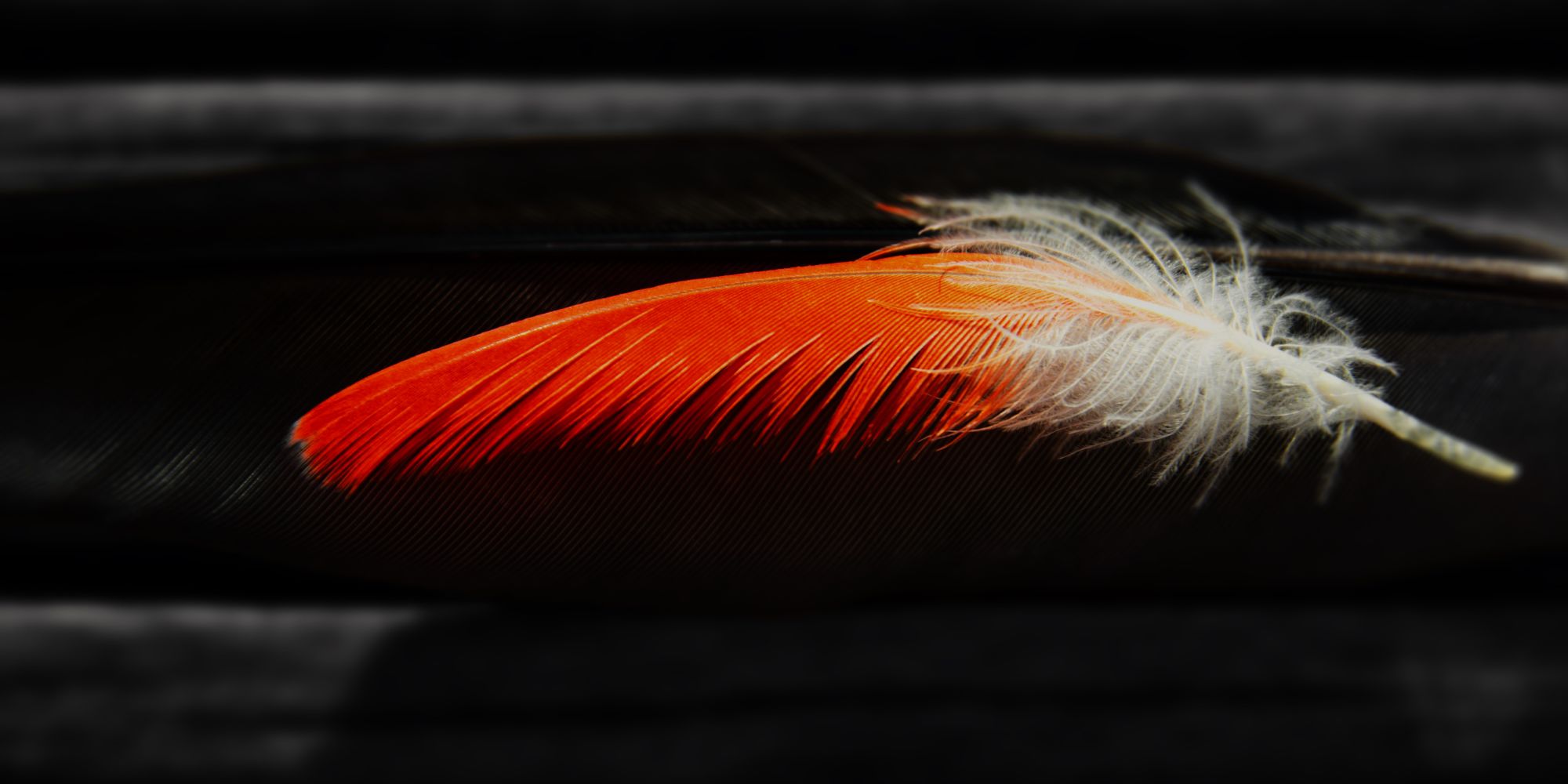
Running Commentary 4/28/2025
Hello,
Andor’s back!! And that means that weekly RC’s are back, too. I switched to every-other-week for a bit while I wasn’t covering a weekly-release TV show, but for at least the next month we’ll have three episodes a week of new Star Wars to cover, so let’s get right into it...
Or, actually, check out my review of the last Star Wars show, Skeleton Crew, which I did not get written and published as quickly as I wanted to, but which did get published before more Star Wars came to screen, at least.

Anyway...
Watching...

Andor
- The second season starts off pretty well with Cassian stealing easily the nicest TIE fighter ever made. This opening sequence is fantastic dialogue leading into fantastic action, but Cassian’s story kind of falls off when he gets captured by a comic relief band of stranded Rebels. Everything from then on plays like scenes from a sitcom — no tension, no point, seemingly, besides keeping Cassian busy for a bit. It was on Yavin IV that whole time? Neat, I guess, but I really don’t think this storyline worked. Too much of it was played for laughs, I think. Not that Andor hasn’t had moments of humor, but the stories have always been deadly serious, which this wasn’t. I remember from Season 1 that every time someone started firing a blaster, it felt like things were going really wrong, and it was stressful for the audience. Here, the two rebel bands are constantly shooting at one another, but no one’s getting hit, and I don’t really care if any did. The fact that it all ends with a surprise rhinoceros also doesn’t lend it much dignity. I don’t think this subplot was bad, per se, but it felt more in keeping with The Mandalorian than with Andor.
- While Tony Gilroy has said he’s not a huge Star Wars fan, it’s clear that he or someone on his team did a deep dive on Mon Mothma’s established backstory. Season 1 brought in her daughter, Leida, and now we’re finally going to get the story of the Ghorman Massacre. Originally mentioned in a sourcebook for the Star Wars TRPG in 1990, this is basically the Star Wars equivalent of Tiananmen Square, the instigating incident for the public establishment of the Rebel Alliance. In Legends, it involved Tarkin landing a starship on a tax protest; in Canon we just know that it happened, shortly before Mothma’s appearance in Rebels, but we know little details. Here, it gets tied into the story of the Death Star’s construction, and it’s looking like it’s going to be a reprisal against a revolt the Empire itself instigates, a model of the Clone Wars, really.
- So Cassian was on Yavin IV that whole time? Neat, I guess, but I really don’t think this storyline worked. Too much of it was played for laughs, I think. Not that Andor hasn’t had moments of humor, but the stories have always been deadly serious, which this wasn’t. I remember from Season 1 that every time someone started firing a blaster, it felt like things were going really wrong, and it was stressful for the audience. Here, the two rebel bands are constantly shooting at one another, but no one’s getting hit, and I don’t really care if any did. The fact that it all ends with a surprise rhinoceros also doesn’t lend it much dignity. I don’t think this subplot was bad, per se, but it felt more in keeping with The Mandalorian than with Andor.
- Nice to see that the Imperial Bureau of Standards doesn’t care if you take a little time off to chase a fugitive across the Galaxy, as we find that Karn has been promoted.
- What happens here to Bix prompted a bit of debate among fans about whether Star Wars is the place to depict an attempted sexual assault. Now, first off, I seem to remember an early scene of Return of the Jedi wherein Jabba the Hutt pulls his favorite dancing girl toward him by a chain, while she struggles with all her might to get away. The scene here is a bit more explicitly spelled-out than that one, but not by much, so I don’t this is exactly unprecedented; furthermore Andor is already established as a show for adults, not really for kids. But I will say that Bix is starting to feel like a bit of a punching bag, a character that mainly exists to have horrible things happen to at the hands of the villains. I worry that she’s going to wind up like Brasso: killed off to make Cassian angry.
- Season 1 was an origin story about Cassian, showing how he went from uninvolved citizen to Rebel operative. I get the feeling, between what we’ve seen on Chandrilla and with Meero, that this season will be something similar for Mon Mothma, showing how she went from secretly subversive Senator to the public face of the Rebel Alliance.
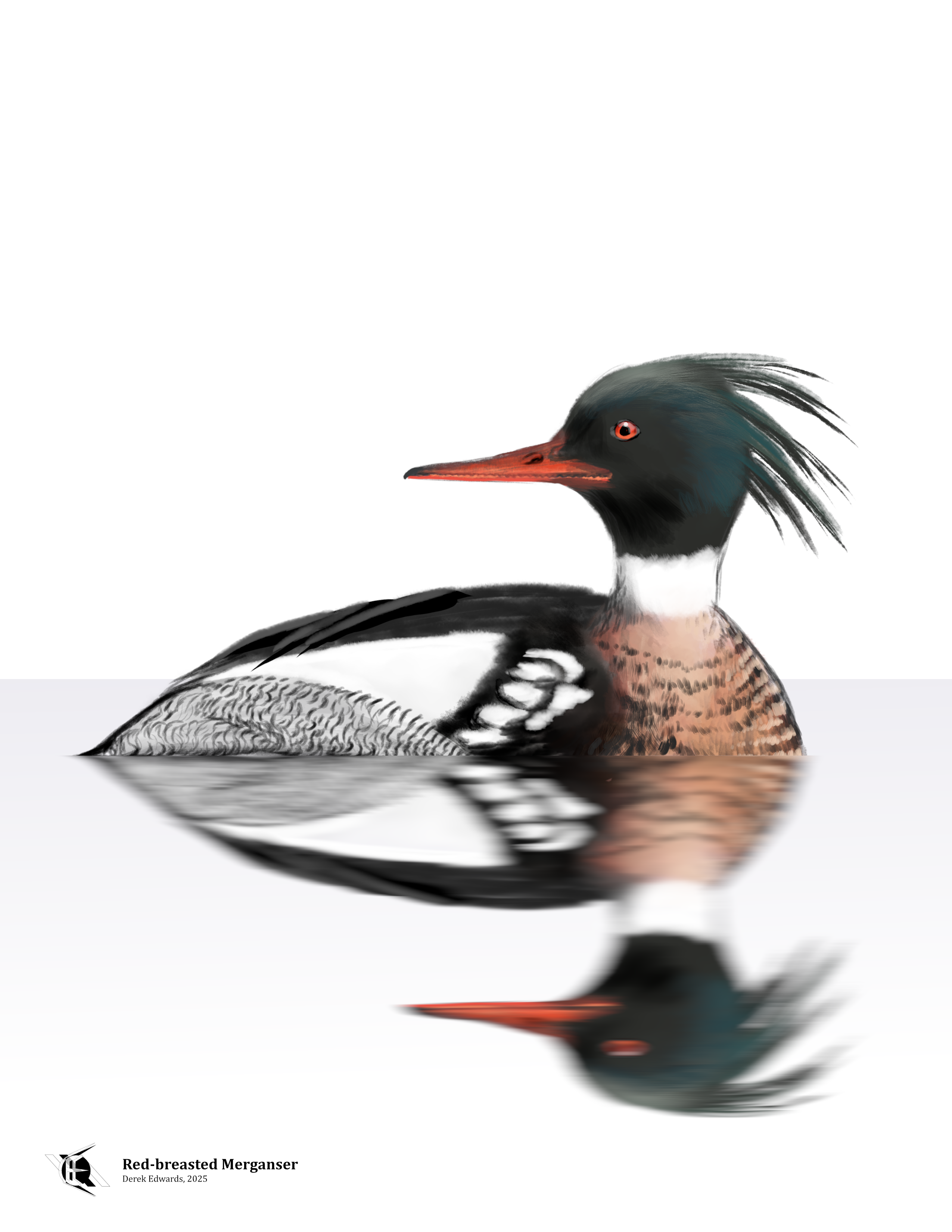
Bird of the Week
At the time of writing, I have seen 166 species of birds, and while some of them are quite common, others were rare treats that I was lucky to spot in Michigan at all. Even among those that reside within my usual range, many birds on my life list I’ve only encountered once. Seeing them again would be almost as exciting as spotting them for the first time. One such bird, which I found again recently, is today’s bird: the Red-breasted Merganser.
The red-breasted merganser belongs to the true merganser group within the genus Mergus. It is one of two species found in both North America and Europe, the other being the common merganser (or “goosander,” as the British call it). Like its relatives, the red-breasted merganser is a long-bodied diving duck with a slim, serrated bill used to snatch slippery fish. It is distinguished from the common merganser by the rusty mottled coloring on its chest and the notably scraggly crest extending from the back of its head. (As I was drawing this, I was worried I wouldn't get this crest quite right, but really it varies from bird to bird and so it's actually rather difficult to get it wrong.) Female red-breasted mergansers resemble female common mergansers but tend to be darker and share the same unkempt crest.
The two species also differ in habitat preference: the red-breasted merganser is primarily a coastal duck, seldom found in the inland lakes and rivers frequented by the common merganser. Instead, it inhabits bays and estuaries. It breeds in isolated areas along river mouths throughout the boreal zone and winters in salty harbors along the coasts of North America and Eurasia. It is mainly seen in freshwater habitats during migration, which is when I have had the chance to observe them.
I first saw a red-breasted merganser on May 10, 2014—not a particularly significant date in my life, but one I recall thanks to a set of photographs marking the occasion. The birds were in the channel connecting Lake Michigan to Lake Macatawa, a rare case of a freshwater estuary. Lake Macatawa is located in Holland, Michigan, a town founded by Dutch settlers known for its annual Tulip Festival. While the town is a wonderful destination—offering excellent beaches and great food—the festival itself never quite appealed to me; it’s crowded and the Lake’s still cold in May and, frankly, there aren’t that many tulips outside of one city park. But anyway, that day in 2014, I was in Holland for the festival also visited the state park, where I spotted red-breasted mergansers: a male and two females.
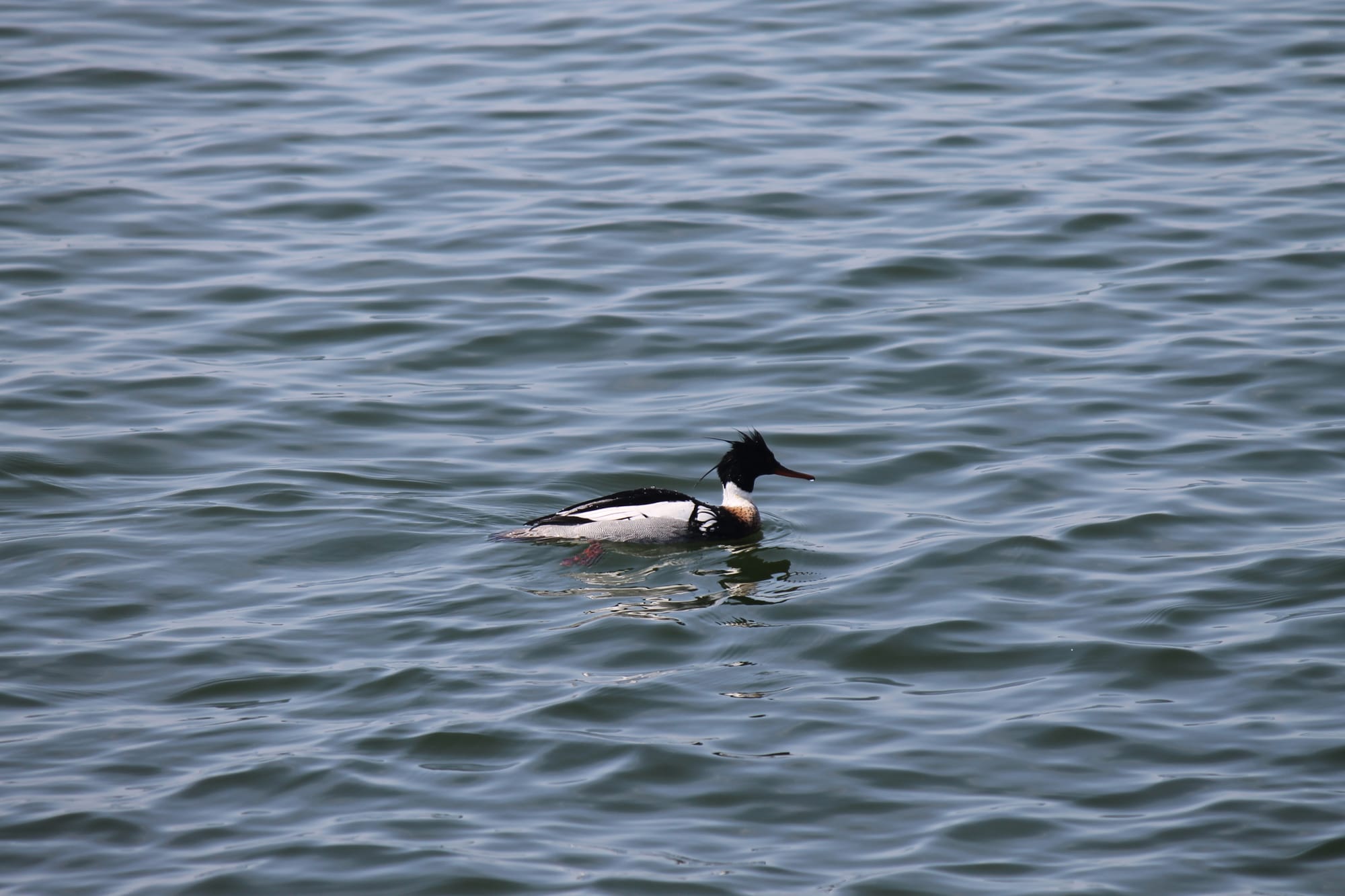
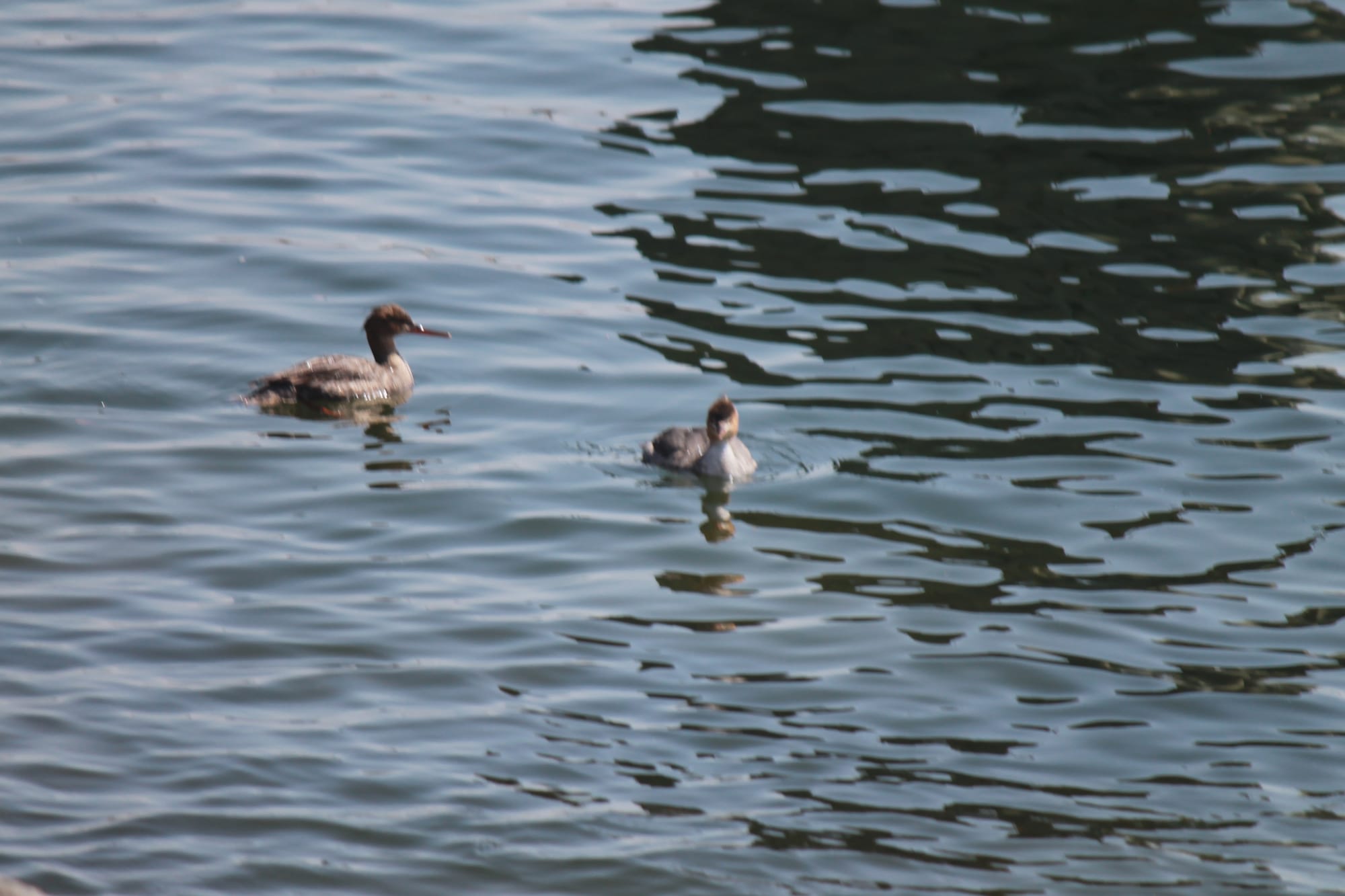
Red-breasted Mergansers seen in 2014 at Holland, MI
That sighting was significant because it was before I had taken birding seriously. In fact, they were the first mergansers of any kind I had ever seen. After that, I wouldn’t spot another red-breasted merganser for over ten years—until April 12, 2025. On that day, I set out in search of a loon that had been reported at a small kettle lake northeast of Lansing. I was eager to see a loon in breeding plumage at close range, as I had only ever observed them from a great distance on large lakes. After successfully spotting the loon, I decided to check Lake Lansing, which was just up the road.
Lake Lansing is not what I, as a Michigander, would call a large lake—it doesn’t compare to the Great Lakes, and even among inland lakes in Michigan, it is relatively small. However, it is large enough for sailing, and evidently large enough to attract deep-water ducks, at least during migration. As I surveyed the water, I spotted five or six dozen red-breasted mergansers spread across the lake’s eastern half, mingling among more commonly inland-found Aythya ducks and grebes. It was an unexpected discovery—one that I hadn’t seen in over a decade. But as Edwards’s Fifth Law of Birding states:
"Birds can fly, and thus they can travel anywhere they’d like—including places outside their officially described range."
As I left Lake Lansing, I resolved that the next bird I drew would be a red-breasted merganser, and here we are.
The name “merganser” is derived from the Latin for “goose” and mergus, the name of an unknown bird from antiquity. The species name for the red-breasted merganser is serrator, Latin for "sawyer,"1 referring to the serrated edge of its bill—hence its occasional common name, “sawbill.” Of course, the bird does not use its bill for cutting but rather for gripping slippery fish, its teeth less like that of a saw than like those of a pair of pliers.
One final fact worth mentioning: the red-breasted merganser is widely recognized as the fastest duck, based on a 1960 report in which an airplane in Alaska pursued one to a ground speed of 100 mph. Ornithologists do not typically monitor speed records for birds, so I must turn to the Guinness Book of World Records for confirmation. According to Guinness, the red-breasted merganser holds the title of the fastest-flying game bird,2 though it is not the fastest waterfowl. That distinction belongs to the spur-winged goose of Africa.3 Basically, that 100 mph merganser was actually flying around 80 mph, albeit into a 20 mph headwind; the spur-winged goose has been officially recorded flying as fast as 88 mph. Guinness also names the spur-winged goose as the most toxic waterfowl due to the accumulated cantharidin in its flesh from a diet of blister beetles. This explains why it is not considered a desirable game bird.
- Jobling, J. A. (editor). The Key to Scientific Names in Birds of the World (S. M. Billerman et al. editors), Cornell Laboratory of Ornithology, Ithaca.
- Guinness World Records. “Fastest Game Bird,” February 3, 2022. https://www.guinnessworldrecords.com/world-records/691273-fastest-game-bird.
- Guinness World Records. “Fastest Waterfowl in Flight,” January 31, 2019. https://www.guinnessworldrecords.com/world-records/558029-fastest-waterfowl-in-flight.
Curation Links
Completely Hazardous Experiments | Sallie Tisdale, Harper's Magazine
A bit of memoir about the author’s inheritance of, among other things, a bottle of elemental mercury; also a look at the history of the toxic, liquid metal.
Meet the Feminist Resistance Fighter Who Created the Modern Kitchen | Kaja Seruga, Atlas Obscura
“[Margarete] Schütte-Lihotzky had been imprisoned since 1941 for her work as a courier for the Communist Party of Austria (KPÖ), which led the resistance against the Nazi regime in her home country. While she managed to narrowly avoid a death sentence, Schütte-Lihotzky remained in jail until the end of World War II in 1945. The incarceration would forever split her life in two. On the one side were her beginnings as a precocious and successful architect spurred on by the desire to create a better life for working-class women. On the other, what she would refer to as her ‘second life,’ as an active communist, political activist, and memoirist who was professionally shunned in Austria for her political beliefs and received her much-deserved accolades only in the final decades of her life. Schütte-Lihotzky led a remarkably long and full life, dying a few days short of her 103rd birthday in 2000. But her name remains forever connected to a space she designed when only 29 years old: the Frankfurt Kitchen, the prototype of the modern fitted kitchen.”
Taming the Bicycle | Mark Twain
"In the late 1870s and early 1880s the first of several bicycling crazes swept across America, and riding schools, cycling clubs, races, and tournaments were established in cities from Boston to San Francisco. The first bicycle models eventually became known as “high-wheels” or “Ordinaries” or (importing from England) “penny-farthings,” their front and back wheels reminding onlookers of a penny leading a farthing, but at the time everyone simply called them “bicycles.” The earliest contraptions, however, were famously hazardous—as 48-year-old Samuel Langhorne Clemens found out in May 1884, when he decided to learn how to ride one.”
Everyone Does It | Craig Ainsley & Rob Munday, Short of the Week
[FICTION] [VIDEO] "If you had the power of time travel at your disposal, what would you do? While the classic answer might be stopping Hitler, what if time travel was more of a casual getaway – letting you hop back a few years for a weekend trip? In Craig Ainsley’s sci-fi comedy Everybody Does It, a trio of time tourists set off on such an adventure, only to face the fallout of breaking their one golden rule" (9 minutes)
See the full archive of curations on Notion



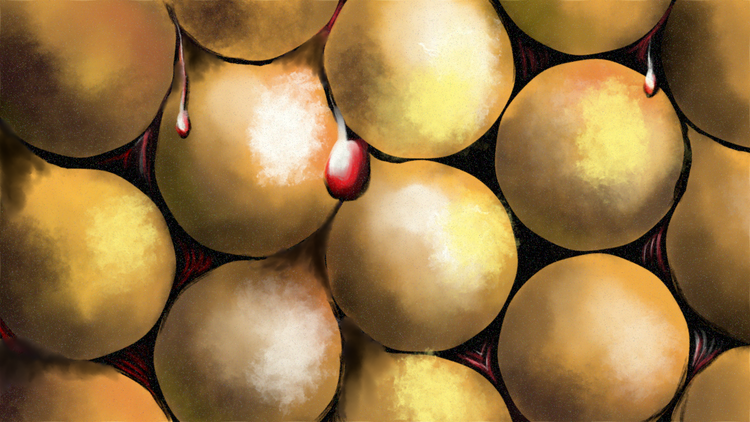



Member Commentary